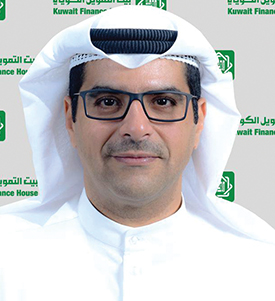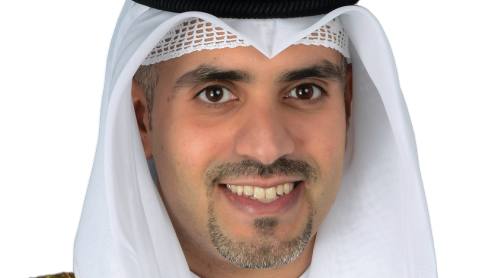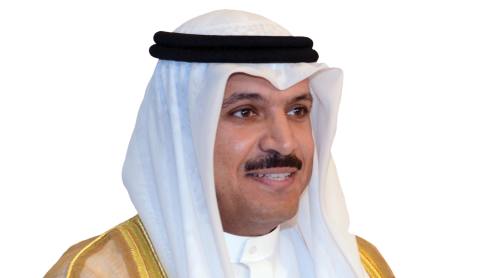As of December 2015, Kuwait had the fifth largest share of Islamic banking assets and the sixth largest share of Islamic funds globally, according to a June 2017 report by the International Monetary Fund (IMF). This in a country with a population of just 4 million.
“Looking ahead, and notwithstanding challenges posed by the lower oil prices, the economic diversification effort could help drive further growth in Kuwait’s Islamic banking industry,” said the IMF report. It noted that Kuwait’s banking sector is the most developed part of the country’s Islamic finance industry, consisting as it does of fully fledged Islamic banks, with Islamic windows of conventional banks not permitted.
Recent regulatory changes, coupled with the adoption of more digital banking technologies, are only likely to further the growth of the Islamic financial sector in the country.
Strong sharia growth
While places such as Malaysia and the United Arab Emirates are considered to be at the vanguard of Islamic finance, Kuwait’s Islamic banking sector is one of the oldest and most established in the world, with the overall share of sharia-compliant assets in the banking system second only to Saudi Arabia.
“You have Islamic banks that are more than 40% of the banking system in Kuwait. That’s significant. It’s a mature Islamic financial sector, and Islamic banks are growing faster than conventional banks in the country,” says Bashar Al Natoor, global head of Islamic finance at Fitch Ratings. He adds that, along with Bahrain, Kuwait has a regulatory system that is “relatively advanced for the Gulf Co-operation Council [GCC], in terms of the Islamic banking sector”.
Those involved in Islamic finance believe it is only a matter of time before sharia-compliant assets account for the majority of assets in Kuwait’s banking sector, and given the performance of Islamic banks in recent years it is not hard to see why. According to EY’s 2016 World Islamic Banking Competitiveness report, between 2010 and 2014 Kuwait’s Islamic banks saw a compound annual growth rate of 10% in assets, versus 6% for conventional banks, with financing witnessing an annual growth rate of 6%, compared with 3% for conventional banks, and investment accounts up an average of 12% a year over that period, versus just 2%.
In 2017, Kuwait Finance House (KFH), the country’s largest and oldest Islamic bank, saw profits rise 11.5% year on year to Kd184.2m ($613.2m), despite the more challenging economic environment, with an 8.1% rise in net financing, fees, commissions, investment and other income. Boubyan Bank, the Islamic subsidiary of the National Bank of Kuwait, also saw its net profits rise in 2017, by 16% to reach Kd47.6m, with total assets up 14% and operational revenue rising 22%.
What we have done at KFH is introduce many initiatives that would support payments services and facilitate online payments, for [younger people]
Other Islamic banks saw equally strong growth. Ahli United Bank Kuwait (AUB Kuwait) saw net profits of Kd44.5m in 2017, up 10.4%, after strengthening its core earnings, with total operating income growing 8.1% to reach Kd120.1m, while Warba Bank, which was established in 2010, saw its net profits rise by 163% in 2017, to reach Kd6.8m. The bank’s total revenue hit Kd61m, up 62% compared with 2016, with its financing portfolio growing 53% to reach Kd1.3bn.
Some, however, see clouds on the horizon. “Despite the growth potential in Islamic banking in recent years, the industry is facing several challenges, particularly competition with conventional banks, economic conditions and the impact of falling oil prices,” says Hamad Al-Hasawi, secretary-general of the Kuwait Banking Association.
Mr Al-Hasawi also points to the challenge of introducing new products and services that suit the Kuwaiti market, while maintaining their compatibility with sharia principles. “High expectations versus low customer knowledge is usually experienced, [as well as] the wrong belief that Islamic finance is less profitable than conventional finance,” he adds.
Asset quality
According to Fitch Ratings’ Kuwait Islamic Banks Dashboard from November 2017, the asset quality metrics for Kuwait’s Islamic banks improved in 2016 and the first half of 2017, with a single unnamed exception. Banks’ operating profitability metrics also strengthened, thanks to lower financing impairment charges, remaining slightly above those of conventional banks. However, the rating agency noted, asset quality remains sensitive to concentration risk and volatility in the real estate sector.
Financing, concentrated in real estate, personal loans and interbank lending, accounts for about 60% of total assets in Kuwait’s Islamic banks, according to the 2017 IMF report, though some banks are actively trying to diversify their portfolios.
“In the past, KFH was primarily a real estate lending institution. We weren't very involved in infrastructure or government-led projects. A shift in focus has started to give us a market share in that aspect,” says Mazin Al-Nahedh, chief executive of KFH.
Recent years have seen KFH focus its strategy on the development of its core banking business. In line with this aim, the lender is anticipating exits from non-core assets in 2018 in the region of Kd140m to Kd150m. “The idea is to dispose of the asset, free the capital, and utilise it in [in our core banking business], while achieving further growth in our financing operations,” adds Mr Al-Nahedh.
Potential merger
In July 2017, KFH disclosed that it was studying a potential merger with Bahrain-based AUB. The deal, if it goes ahead, would result in KFH becoming the country’s largest bank, as well as the sixth largest in the GCC, though the bank would continue to trail Saudi Arabia-based Al Rajhi Bank as the second largest Islamic bank in the world.
In an Issuer Comment, Moody’s anticipated that the potential merger would present significant integration challenges owing to the banks’ geographically dispersed assets, but that it would “strengthen and diversify KFH’s business, support its profitability and overall credit quality, and offer benefits from potential economies of scale and increased lending opportunities in a slowing economic environment”.
According to Mr Al-Nahedh, KFH’s largest shareholder, Kuwait Investment Authority, has appointed an external adviser to study the deal. “As far as our relationship with AUB, there is nothing signed between the two parties and no memorandum of understanding, as previously disclosed multiple times,” he adds, saying that if the merger was seen as promising, and potentially adding value to KFH, it would be something for shareholders to consider, “subject to the regulators’ approval”.
Mature Islamic market
Kuwait has made significant advances in recent years in strengthening the regulatory framework for its Islamic finance sector.
In December 2016, the Central Bank of Kuwait issued new governance rules for the internal and external oversight of sharia-compliant lenders. The new regulations, which had to be fully implemented by January 2018, include requirements for external sharia audits as well as rules restricting Islamic scholars from serving on the sharia boards of more than three banks. Scholars must also now have at least five years of suitable industry experience.
“[AUB Kuwait] converted from a conventional bank to a sharia-compliant bank in April 2010 as the potential for substantial growth in this market segment in Kuwait was evident. Since then, the market has both grown and matured and this has been reinforced by the new regulatory framework issued by the Central Bank of Kuwait,” says AUB Kuwait chief executive Richard Groves, who adds that the new framework gives greater clarity to corporate governance, transparency and supervision.
In November 2015, Kuwait’s Capital Market Authority also released comprehensive legal guidelines on the issuance of sukuk, with the lack of a specialised legal framework considered a key factor in the limited issuance of sukuk to date.
Sukuk issuance
According to Standard & Poor’s, global sukuk issuance in 2017 increased by 45.3% to hit $97.9bn, up from $67.4bn in 2016. This was on the back of major issuances by some of the GCC countries, notably the $9bn sukuk issued by Saudi Arabia, the largest Islamic bond issued globally to date. However, Kuwait has lagged behind its neighbours.
“There is a lot of potential and talk, but to date we haven’t seen a sovereign sukuk, and we don't see an active corporate or financial institution sukuk market. In all the other GCC countries, the sovereign has issued a sukuk, a yield curve has been established. We think this continues to be a disadvantage for Kuwait,” says Fitch’s Mr Al Natoor.
Among the banks, AUB Kuwait issued a $200m perpetual additional Tier 1 capital issue sukuk in October 2016, with the deal more than three times oversubscribed. Boubyan Bank completed its own $250m Tier 1 sukuk in May 2016, with an order book of about $1.3bn, while Warba Bank issued a $250m Tier 1 sukuk in March 2017. That same month, KFH’s shareholders also approved the future issue of sukuk and other financial instruments.
Kuwait’s Islamic banks have also been involved in the financing of external deals. Notably, KFH participated in the management and issuance of sukuk worth more than $4bn in 2017, including operating the sukuk issuance process for Arab Petroleum Investments Corporation and Oman’s Mazoon Electricity Company. The bank also traded a total volume of $16.6bn in sukuk, both regionally and globally, in 2017, up from $11.4bn the year before.
Targeting youth
According to Mr Al-Nahedh, there is a growing preference for Islamic banks among younger people in Kuwait. “I think it’s fundamental for a lot of people because they don’t believe that conventional banking conforms with their beliefs,” he says. However, he adds that this puts pressure on Islamic banks to develop modern products that are suitable for younger customers. “What we have done at KFH is introduce many initiatives that would support payments services and facilitate online payments, for those segments,” he says.
Other banks have also been pushing new technologies, with Boubyan Bank the first in Kuwait to introduce near-field communication technology to its debit, credit and prepaid cards, enabling contactless payments. More recently, the bank has established its own digital innovation centre.
With all these developments, Kuwait’s goal of becoming a key regional and global Islamic finance hub seems ever more likely.












